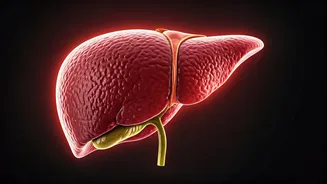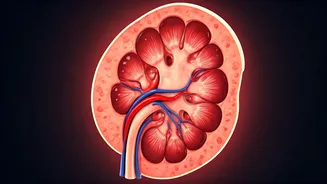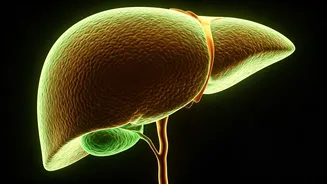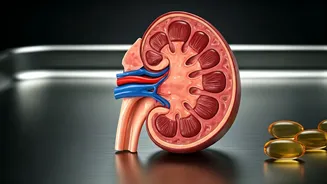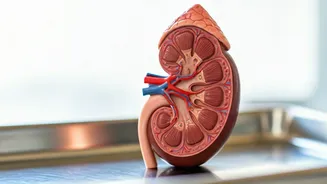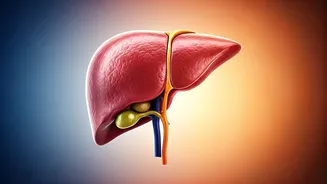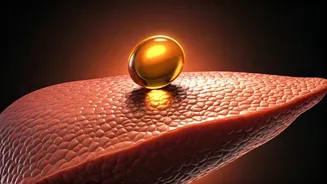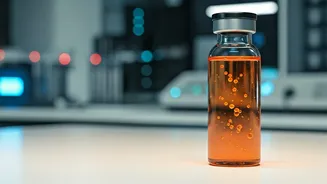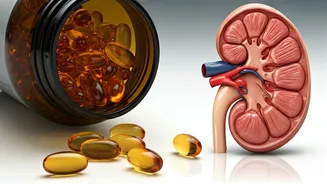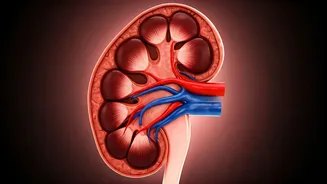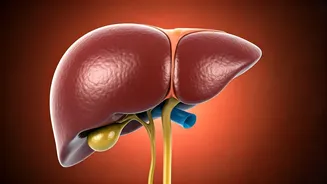What is Toxicity?
Vitamin D toxicity, or hypervitaminosis D, occurs due to excessive intake of vitamin D, typically from supplements rather than sun exposure or dietary
sources. Unlike other vitamins that the body can eliminate easily, vitamin D is fat-soluble, meaning it's stored in the body, leading to a buildup when consumed in excess. This can cause a surge in blood calcium levels, or hypercalcemia, which can then cause symptoms ranging from mild to severe. This emphasizes how important it is to consume supplements as per a medical professional's advice. The key to avoiding toxicity is to adhere to recommended dosages and to periodically check vitamin D levels, especially if supplementing.
Recognizing the Symptoms
The initial signs of vitamin D toxicity can be subtle. The earliest symptoms may include gastrointestinal distress, which shows itself through nausea, vomiting, and loss of appetite, as well as excessive thirst (polydipsia) and frequent urination (polyuria). As the condition worsens, symptoms become more severe. These symptoms can include weakness, fatigue, and bone pain, stemming from the body trying to deal with the increased calcium levels. Kidney damage, another potential consequence, can cause even more pronounced symptoms, such as changes in urine output, along with increased blood pressure. It's critical to recognize these symptoms and seek medical attention if you think there's a problem.
Dangers of Excess
Prolonged vitamin D toxicity can lead to several serious health complications. The primary concern is the effects of high blood calcium, a condition referred to as hypercalcemia. This can cause kidney stones, as excess calcium deposits in the kidneys, leading to painful obstructions and potential kidney damage. Cardiovascular problems are also a risk, with hypercalcemia potentially causing heart rhythm abnormalities and even heart failure. Moreover, the body can store excessive amounts of calcium in soft tissues, leading to calcification of the arteries, which increases the risk of heart attack and stroke. Therefore, it’s very important to closely monitor vitamin D intake to protect against such health risks.
Safe Reversal Strategies
The primary step to reversing vitamin D toxicity is to stop taking vitamin D supplements and reduce calcium intake from both diet and supplements, this usually allows the body to restore balance. It’s important to seek medical attention to check your health and adjust any medications accordingly. In many cases, doctors may recommend intravenous fluids to increase hydration and help flush out the excess calcium. In serious cases, medications like corticosteroids or bisphosphonates may be used to reduce calcium levels. Regular monitoring of blood calcium and vitamin D levels is essential to track the effectiveness of the treatment and ensure recovery. Following medical advice strictly is crucial.
Preventing Toxicity Naturally
The best way to avoid vitamin D toxicity is through prevention. Firstly, it’s essential to consult with a doctor before starting any vitamin D supplements, so you can determine the right dosage. Also, regular blood tests to measure vitamin D levels will allow you to monitor your levels and make adjustments to your supplement intake. Since sun exposure is a natural source of vitamin D, balance it with time outdoors. Remember to eat a balanced diet that includes vitamin D-rich foods like fatty fish, fortified foods, and dairy products. Finally, always read and follow supplement instructions carefully, and never exceed the recommended daily allowance. By adopting these preventive measures, you can maintain a healthy vitamin D balance and avoid toxicity.
